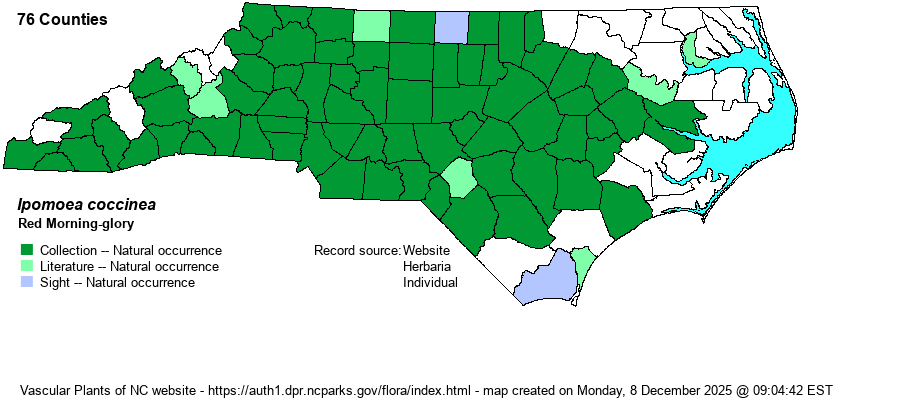| Author | L. | |
| Distribution | Throughout the Piedmont and most of the Mountains. Present over most of the western and central Coastal Plain, but very rare near the coast and in the northeastern portion. Most references consider this species not native in the U.S., but Weakley (2018) states: "Native distribution uncertain, but apparently native to the se. United States."
This species ranges from PA and IA south to GA and TX, seemingly absent from FL.
| |
| Abundance | Fairly common to frequent in the Piedmont and most of the central and western Coastal Plain, but uncommon to infrequent in the Mountains. Rare to absent in the eastern Coastal Plain. NatureServe does not consider it as a native and does not bother to give a Global Rank at all (= GNR); however, as this website generally follows Weakley (2024), the editors have given the State Rank as [S5]. | |
| Habitat | This is a species of disturbed places, such as roadsides, fallow fields, thickets, and edges of moist woods. These habitats are reason for being suspicious of its provenance in the U.S. |
| Phenology | Blooms from August to frost, and fruits shortly after blooming. | |
| Identification | When in bloom, this is a very obvious species, nothing else looking like it. However, vegetatively, it is just another heart-leafed vine. It is an herbaceous vine growing to 6-8 feet long, often twining. It has widely scattered alternate heart-shaped leaves, about 2-3 inches long and nearly as wide. Some plants or populations can have leaves with side lobes near the base, but in either case, once the flowers are seen, it is easily identified as this species. From many of the leaf axils grow the flowers, each one somewhat trumpet-shaped, about 1-1.5 inches long but only 2/3-inch across, and bright orange-red or scarlet in color. These flowers are much smaller than most others in the genus and also are more tubular and not as flaring in a funnel shape. Another Ipomoea has scarlet-red flowers, I. quamoclit, but that species -- definitely not native to the U.S. -- has leaves finely divided into numerous, very narrow segments (unlike any other NC plant). | |
| Taxonomic Comments | Some old references placed the two scarlet-flowered species in the genus Quamoclit.
| |
| Other Common Name(s) | Scarlet Creeper, Redstar, Mexican Morning-glory | |
| State Rank | SE [S5] | |
| Global Rank | GNR | |
| State Status | | |
| US Status | | |
| USACE-agcp | FAC link |
| USACE-emp | FACU link |

